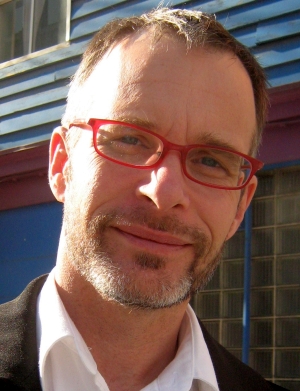Podcast: Play in new window | Download | Embed
Subscribe: RSS
 Dr. “George Church is one of the most brilliant scientists in the world,” says Steven Pinker on the front cover of Regenesis: How Synthetic Biology Will Reinvent Nature and Ourselves
Dr. “George Church is one of the most brilliant scientists in the world,” says Steven Pinker on the front cover of Regenesis: How Synthetic Biology Will Reinvent Nature and Ourselves.
Regenesis is the recent book that Church wrote together with Ed Regis, where the authors “imagine a future in which human beings have become immune to all viruses, in which bacteria can custom-produce everyday items, like a drinking cup, or generate enough electricity or biofuel to end oil dependency. Building a house would entail no more work than planting a seed in the ground…”
These are just a few low-hanging fruits that the tree of synthetic biology may provide for us. So why is it that some scared pundits are calling it “the most dangerous idea”?!…
During my Singularity 1 on 1 interview with George Church, we discuss the above plus a variety of other topics such as: how he got interested in genetics and why he considers himself more of a technologist and inter-disciplinarian; the synthetic biology revolution of the past few years (beating Moore’s Law by a factor of 6); his views on religion; his dyslexia, high cholesterol, and other mutations; 23andMe and DNA testing in general; the difference between genetics and synthetic biology; transhumanism, faith, mirror organisms and mirror humans; intellectual property rights and patenting living organisms; genomics and longevity…
My two favorite quotes from Dr. Church are:
Inactivity and complacency are the most dangerous ideas… and assuming things will be fine if we do nothing.
We should not assume things will stay the way they are. Or that inactivity is the right path.
As always you can listen to or download the audio file above or scroll down and watch the video interview in full. To show your support you can write a review on iTunes, make a direct donation, or become a patron on Patreon.
Who is George Church?
George Church is Professor of Genetics at Harvard Medical School, Director of PersonalGenomes.org, providing the world’s only open-access information on human Genomic, Environmental & Trait data (GET). His 1984 Harvard Ph.D. included the first methods for direct genome sequencing, molecular multiplexing & barcoding. These lead to the first commercial genome sequence (pathogen, Helicobacter pylori) in 1994 . His innovations in “next generation” genome sequencing and synthesis & cell/tissue engineering resulted in 12 companies spanning fields including medical genomics ( Knome, Alacris, AbVitro, GoodStart, Pathogenica ) and synthetic biology ( LS9, Joule , Gen9, Warp Drive ) as well as new privacy, biosafety & biosecurity policies. He is the director of the NIH Center for Excellence in Genomic Science. His honors include election to NAS & NAE and Franklin Bower Laureate for Achievement in Science.




![Reblog this post [with Zemanta]](https://img.zemanta.com/reblog_e.png?x-id=bfc1abbe-782e-4124-bd99-088e2ef6f853)